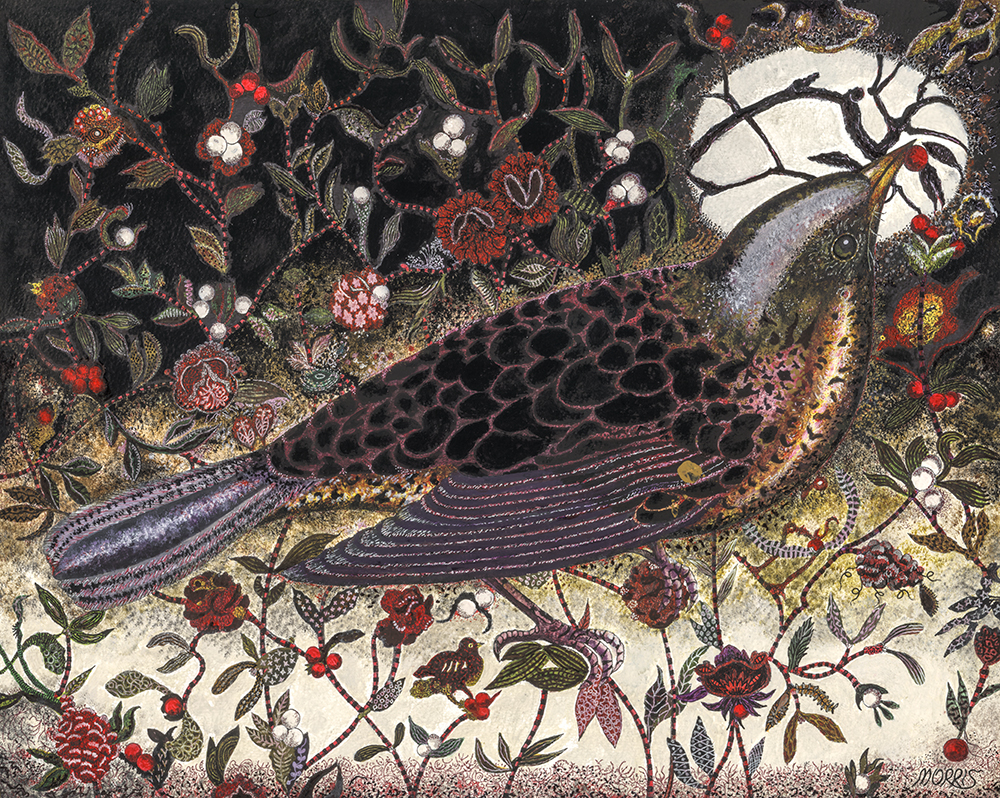MISTLE THRUSH (Turdus viscivorus) DECEMBER
The Mistle Thrush is Britain’s largest song-bird with the boldest of habits. It differs from the more abundant Song-Thrush, with its greyer-toned plumage, grey-brown upper parts and white breast spotted with darker brown. The countryside’s winter clarion devours mistletoe; once the sacred plant of Ancient Britons, used as a poison antidote and nerve relaxant; holly and hawthorn berries. In the Renaissance poem ‘The Harmony of Birds’, a Mistle Thrush, ‘Big Mavis’, is depicted as an omnivore gorging on ivy berries and mountain ash. The bird will attack other species to protect its food supply, even cats and humans. It is also known as ‘Storm Cock’ because it sings at the top of its voice from the most exposed positions at the height of storm. Its call is likened to the sound of a football rattle and can be heard over a mile away. It nests usually in the fork of a tree and its eggs are laid as early as February, though each pair rears up to three broods of chicks as late as June. The poet Ted Hughes celebrated its mechanical feeding energy as ‘Nothing but bounce and stab’ whilst Thomas Hardy called it ‘The Darkling Thrush’ in his famous poem published in December 1900.
